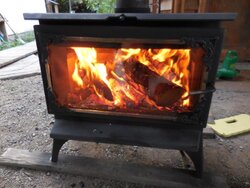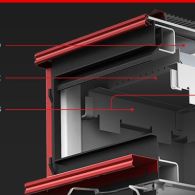I purchased this stove used last year to replace a smaller stove. I've used many wood stoves over the years and could any of them as hot as I wanted. This one burns lazy though. In fact, I have to leave the door unlatched much of the time to keep the fire going, as seen in this pic. When latched, it's as if the damper is mostly closed. The fire, starved of oxygen, will shut down and the wood just smolders.
I'm guessing there's a clog some where...but I can't figure out where the air from the open damper enters inside the stove.
Is there a clog...or is it something else? Doesn't seem like this should be rocket science but I'm stumped. Anyone?

I'm guessing there's a clog some where...but I can't figure out where the air from the open damper enters inside the stove.
Is there a clog...or is it something else? Doesn't seem like this should be rocket science but I'm stumped. Anyone?

Last edited by a moderator:




